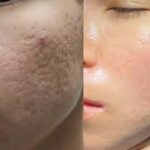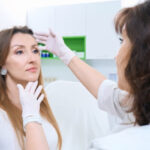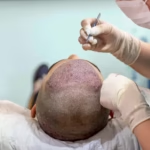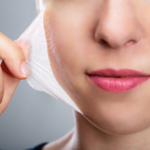Rosacea is a common skin condition characterized by facial redness and visible blood vessels. It may also produce small, red, pus-filled bumps, and in some cases, symptoms can flare up for weeks to months and then diminish for a while. While there is no cure for rosacea, understanding its causes and the factors that can provoke them is a step toward managing the condition.
Recognize Rosacea Symptoms
Rosacea presents with a diverse range of signs and symptoms that vary significantly among individuals. The most common indicator is persistent facial redness, typically in the central face, often accompanied by a sensation of warmth or stinging. Many individuals also develop swollen, red bumps, some containing pus, which can resemble acne.
Over time, the skin can thicken and enlarge, especially on the nose, a condition known as rhinophyma, which is more common in men. About half of individuals with rosacea experience eye symptoms, including dryness, irritation, and swollen eyelids. Recognizing these diverse symptoms is helpful in effectively managing the condition.
Identify Rosacea Triggers
Identifying what triggers rosacea flares is a key component of managing the condition effectively. These triggers can vary from person to person, so personal observation is helpful for determining individual sensitivities. A wide range of factors can prompt a flare-up, and keeping a diary of daily activities, diet, and environmental exposure can help pinpoint specific causes. Common triggers are often related to environmental, dietary, and lifestyle elements. Some frequently reported triggers include:
- Foods and Beverages: Spicy foods, hot drinks like coffee and tea, and alcohol, particularly red wine, are often cited.
- Environmental Factors: Exposure to sunlight, wind, extreme hot or cold temperatures, and high humidity can all provoke symptoms.
- Lifestyle and Emotional Factors: Strenuous exercise, emotional stress, and anxiety are also known to cause flare-ups for many individuals.
Manage Symptoms Effectively
Once symptoms appear, several strategies can help manage them. A gentle skincare routine using mild, sensitive-skin-friendly cleansers and moisturizers is foundational. Avoid products with alcohol, exfoliants, or other harsh ingredients. A medical consultation can lead to topical or oral medications to reduce redness and inflammation. Following your prescribed treatment plan is beneficial for achieving the best results.
Reduce Trigger Exposure
Minimizing contact with known triggers is a proactive way to manage rosacea and reduce flare-ups. If sunlight is a trigger, applying a broad-spectrum sunscreen with an SPF of 30 or higher should be a daily habit, even on cloudy days. Dietary adjustments, such as avoiding or limiting foods and drinks that act as personal triggers, can also make a significant difference. When dealing with environmental factors, protecting your face from extreme cold or wind with a scarf can help prevent irritation. Being mindful of these triggers can go a long way in keeping rosacea under control.
Take Control of Rosacea Symptoms
Effectively managing rosacea involves recognizing its symptoms, identifying personal triggers, and implementing consistent management strategies. By understanding how environmental, dietary, and lifestyle factors impact your skin, you can take deliberate steps to minimize flare-ups. A gentle skincare routine and mindful avoidance of triggers are tools for maintaining skin comfort. For an evaluation and personalized management plan, schedule a consultation with a dermatologist.









